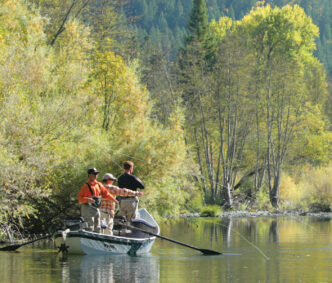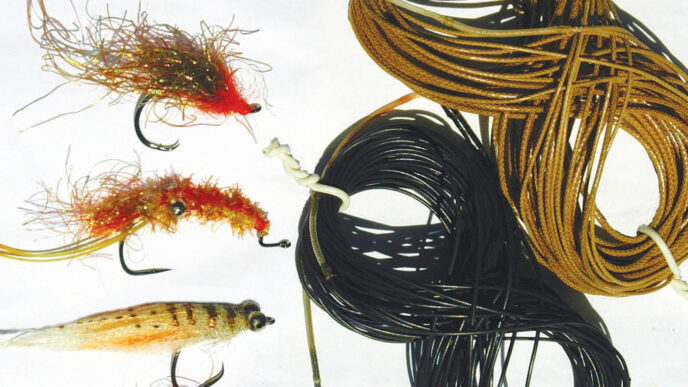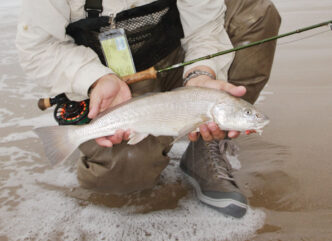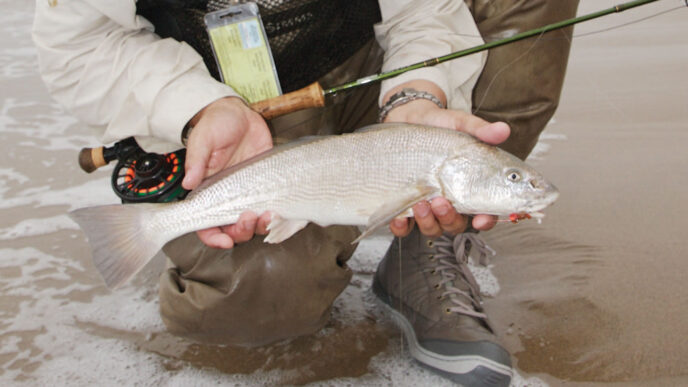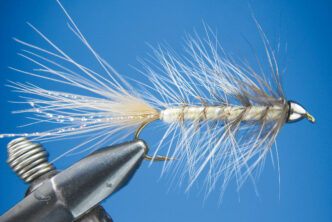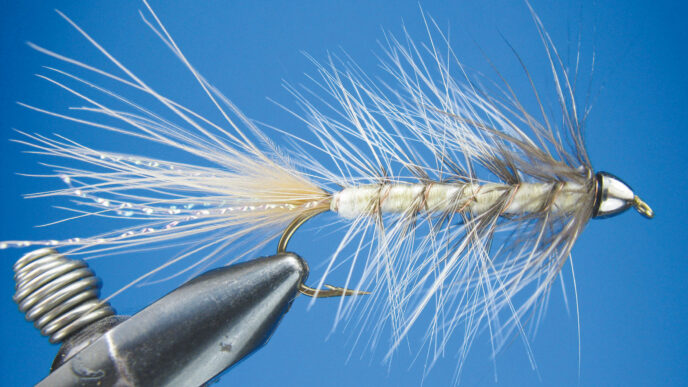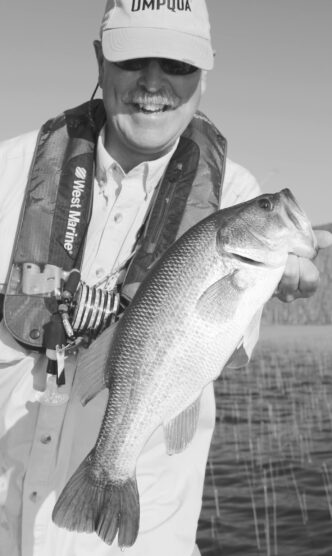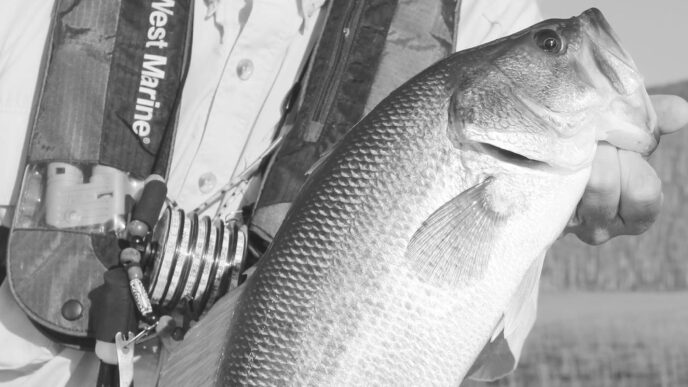The International Fly Tackle Dealer Show finished up in mid July this year, and as usual, the industry’s manufacturers had a lot of new gear to show off. As near as I can tell — and I admit that I stayed far away from the show in Orlando’s gooey summer heat — nothing particularly earthshaking surfaced, though there were the usual “incrementally better” new products. Let’s take a look at the new fly rods.
Sage has another attractive line of rods priced in the high-medium price range for 2015. Accel models — the name has resonances with both “excel” and “accelerate” — are emerald green with dark green wraps and black accents. They won Best Freshwater Rod at the July dealer show. There are 17 single-handed Accels, all four-piece rods, at $595 in the usual 8-foot 6-inch to 10-foot lengths for line weights 3 through 9, and one cute little 7-foot 6-inch 3-weight. Three 11-foot 4-inch switch rods at $695 and four 12-foot 6-inch to 13-foot 6-inch Spey rods at $750 for 6-weight through 8-weight lines complete the Accel lineup. The 590-4 that I cast was medium fast, with a nice feel in hand, tracking cleanly and easily forming tight or open loops. All Accels come in a green ballistic nylon tube with carrying strap, rather than an aluminum tube. That’s not only more than adequate, but the carrying strap keeps the tube from rolling around. Rod components and cosmetics were all the usual excellent Sage quality, with the exception of the grip, which had been bleached, masking numerous filled voids. Still, with high-quality cork running well over a dollar a ring, it’s no surprise to get lesser, but acceptable quality on a midrange rod.
Among other midrange rods, Tim Rajeff ’s Echo has shuffled its lineup a bit. New, lighter, and quicker Boost models replace the Echo Edge series and are intended to compete with TFO’s BVK line. There are 12 Boost models, at $229.99 for freshwater rods and $249.99 for saltwater models. Blanks have a matte-black finish with red (freshwater) or blue (saltwater) wraps, Wells grips with composite corks at the top, and black, all-metal uplocking reel seats. Also, at the beginner end of the price range, there are new Echo Base models, four 9-footers for line weights 4, 5, 6, and 8 at $89.99 to $99.99 — nothing fancy, but at those impressively low prices, you wouldn’t expect it.
For the retro double-hander crowd, Echo has also introduced a series of fiberglass switch and Spey rods to go with their shorter single-handed models. New 10foot 6-inch to 10-foot 10-inch rods for 3weight through 7-weight switch lines are
$279.99, and 12-foot 4-inch to 12-foot 7-inch rods for 6-weight through 8-weight Spey lines are $299.99. They are built on butterscotch-colored blanks with cork-insert uplocking reel seats on all but the 8weight, which has a downlocking seat. One fellow who’d tried them described them as “Skagit monsters.”
And speaking of glass, TFO has added two new fiberglass rods to their Finesse series, a three-piece 7-foot 3/4-weight and a 7-foot 6-inch 5/6-weight. Both are nicely appointed and run a mere $199.95. On the big-rod front, TFO has added 9-foot four-piece 10-weight and 12-weight “predator rods.” They’re priced at $319.95 and designed to cast big, bushy flies for aggressive freshwater and saltwater fish. Named Esox for the musky family’s taxonomic title, they have an extended grip that looks like a Wells grip on top of a second Wells grip and an IFGA-compliant two-inch-long fighting butt. Both are designed to let you cast two-handed, if you can’t get the mop you’re casting out of the water or out past your rod tip, and to enable you to do figure-eight moves with the rod to elicit strikes when the fly is near the boat. The cork on the rods I saw looked to be a composite, rather than the usual smooth “specie” cork. Esox rods are a nonglare brown with TFO’s proprietary TiCr coating for durability.
Last year, Redington introduced the first really good synthetic handle material in their Vapen series of fast-action graphite rods. The polymer Power Grip was developed in collaboration with the golf-club-grip company Winn Grips. It had great feel and texture, didn’t slip when wet, cleaned quickly, and was easy on the hand muscles. But it was red (for REDington, one imagines) and while it was functionally great, lots of us found the red color a bit outré. This year, Redington has come up with a Vapen Black series of rods with black Power Grip handles, and those among us who shun bright colors can take the rods more seriously. The black Power Grip models are available on the same models as the Vapen Red (9-foot fourpiece rods for line weights 4 through 12), at the same $349.95 price.
Adamsbuilt Fishing, of Fallon, Nevada, which entered the fly-fishing market with a strong showing in 2012, has upgraded its highest-quality combination rod/reel/line outfit. The new GVH combo, at $299.95, has an improved, progressive-action graphite 9-foot 5-weight fourpiece model, matched with a machined 6061 T-6 aluminum fly reel that’s been loaded with a weight-forward 5-weight floating line and backing. It all comes packaged in a ballistic-nylon-covered rod-and-reel tube.
When Hardy was purchased a year or so ago by Pure Fishing, the company that already owned Berkley, Fenwick, Abu Garcia, and Trilene, Hardy devotees wondered what would become of their treasured brand. Well, for starters, they’ve introduced a lower-priced Sintrix rod line. (The Sintrix name refers to the company’s proprietary and highly durable fiber-resin combination.) Hardy’s earlier Sintrix Pro Axis rods were light, fast, strong, and got universally good reviews from scores of critical anglers on both sides of the Atlantic. But they were expensive ($689 to $699 for single-handed models), and that limited sales a bit. The new Sintrix Jet series comes in at $445 to $495 in all the usual lengths and line weights.
I guess I was prescient when I suggested, in July/August’s “Gearhead,” that there might be something of value in shorter fly rods, because Orvis and G. Loomis just added sub-9-foot models to their lineups.
G. Loomis Pro4x Shortstix are that company’s major new fly rod launch this year. These 7-foot 6-inch three-piece heavy-line models for 9-weight through 12-weight fly lines are said to be “quickloading and dramatically easier to cast.” The company tells us that the rods are keyed to the demands of Northeast striper and bluefish anglers, but notes that Shortstix also should be great for roosterfish, big snook, tarpon, pike, golden dorados, muskies, and peacock bass. And if you wonder where you should fish them, you’ll learn that they’re meant for “shallow wading, casting from the jetties or from a boat.” That covers both the aquarium and the waterfront. What I think it boils down to is a series of fast, beefy little rods that are capable of delivering surprisingly large flies in tight quarters where back casts are tough, also giving the angler a short-rod leverage advantage over muscular fish. They’re modestly priced, too, from $400 to $425.
Orvis’s short rods are part of the company’s new Recon lineup, which replaces the Access series (there’ll be a quiz on this, so pay attention). Like G. Loomis’s Shortstix, as well as Sage’s Bass II and TFO’s Mini Mag models, short Recons are intended primarily for saltwater or heavy freshwater use. The 7-foot 11-inch 4piece Recons, for lines 8-weight through 10-weight, are modestly priced at $425. In addition to the 7-foot 11-inch Recons, there are saltwater Recons at 8 feet 6 inches, 9 feet 10 inches, and 10 feet for line weights from 6 through 10.
In addition to the saltwater models, Orvis has eight four-piece freshwater Recons for line weights 3 through 6, including an 8-foot 4-inch 3-weight and a 10-foot 5weight. Again, they’re $425. Recons are all made at Orvis’s Manchester, Vermont, rod shop, using nice components and cosmetics, plus an innovative ferrule design.
Orvis has also joined Hardy, G. Loomis, and Echo in the one-piece saltwater rod club. The company’s new Helios 2 One Piece models are 8-foot 10-inch rods for line weights 8 through 12. The idea rods is to provide a rod with nothing to get in the way of smooth energy transfer when casting and nothing to create a weak spot when fighting fish, and wonderful though they are, any ferrule does both. Helios 2 One Piece rods are made in Manchester, Vermont, and feature midnight-blue blanks, REC Recoil guides, nice cork, and two-tone, all-aluminum reel seats with red barrels and black skeleton threads and locking rings. An $895 retail price makes them slightly more expensive than Helios 2 multipiece saltwater rods at $850, but I suspect they’re harder to fabricate, adding to the cost. If you already keep your rods assembled in your skiff or your vehicle, you’ll want to give them a look.
Scott and Sage also introduced new saltwater-specific rods for 2015. Sage’s saltwater launch for 2015 is a high-end rod line called Salt. (And here let me give thanks to the folks at rod companies everywhere who’ve dumped alphanumeric names that have the memorability of computer-generated Internet passwords.) The Salt line won the Best Saltwater Rod award at the recent dealer show, so it comes with instant street or on-the-water cred. There are twelve four-piece Salt models, 10 9-footers for 5-weight through 12-weight lines and two 8-foot 6-inch models for 13-weight and 14-weight lines. Salts are a striking sapphire blue with black wraps and twin silver accents. They are not inexpensive at $850, but that seems to be the going price for top-end rods from the major manufacturers.
Scott’s new dedicated saltwater lineup is called the Tidal series and includes five 9-foot four-piece models for line weights 7 through 12. At $475, Tidals fall in the midpriced range (and I can’t believe I’m calling half a grand “midpriced”). Blanks are unsanded “natural graphite” with guides wrapped in a translucent, bright slate blue with lime-green tipping. The contrast between guide wraps and rod blank is an eye grabber.
A couple of friends and I spent a morning at the casting ponds with 9-weight versions of both the Salt and the Tidal to see how the rods compared. Sage lists the 990 Salt at 4-1/8 ounces, but it weighed just 4.05 ounces on my digital scale. The Scott T909/4 was a quarter of an ounce heavier, not enough difference to be noticeable. Both rods have uplocking, all-aluminum reel seats. The Tidal reel seat has a machined sliding hood, a milled slot for the reel foot, and locks up solid. The Salt’s seats are a bit glossier, have more easily grasped knurled lock rings, a sliding hood on which the rod’s weight is etched, and a slick hook-keeper innovation: an extra slot next to where the reel foot sits under the grip, into which the point of a fly can be inserted. The Salt’s fighting butt is more dramatically shaped than the Tidal’s and looks, well, saltier. Both rods had seven-inch-long Wells-shaped grips, the Tidal’s slightly more flared, both just fine on a beefy 9-weight. The Salt may have had slightly better quality cork, but not by much, and both grips looked like they’d been bleached in the same white bath, which covered a number of filled voids. (Who are the cork suppliers trying to fool?) Stripping guides on both rods are high-quality ceramics, with the Salt using Fuji 20s and 12s and Scott using Pacific Bay’s 20s and 16s. Scott’s Tidal uses eight oversize hard-chrome snake guides to Salt’s seven. Wrap finish was perhaps a bit smoother on the Sage Salt, but the Tidal had alignment dots, a classy touch that makes section alignment easy. The Tidal comes in an embroidered black rod sock and a black ballistic-nylon tube with a logo decal on top with the rod’s model and serial number handwritten. The Sage Salt comes in an almost identical screen-printed black sock, but the tube is bright-blue powder-coated aluminum with the rod’s specs laser etched into the metal cap.
Components and packaging aside, two rods are very different. Sage’s Salt is a fast-action rod, relatively stiff through the middle and toward the very tip, with a bit of give toward the bottom end. Blank diameters, relative to Scott’s Tidal, are on the small side, and the walls are relatively thicker. That design choice makes for a very durable blank, and absent Sage’s cagey material selection and layup, might create a pokey rod. The Salt is anything but that. It casts a fast, flat line with excellent speed and control, though it seemed to me to handle best at medium to long distances.
The Scott Tidal blank is larger in diameter and relatively thinner walled, which makes for liveliness and a sweet feel, but is potentially less able to withstand abuse. (Scott claims it’s more than tough enough.) Its action is also more progressive than that of the Salt, with a more dominant butt section giving way to increasingly more flex toward the tip. Like the Salt, the Tidal handled weight-forward 9weight floating saltwater lines handsomely at long distances, but I thought it cast inside 25 feet a bit more easily than the Salt.
Truth be told, I thought both were a bit underlined with traditional saltwater 9weight floaters, and I’m guessing their makers expect them to be fished a lot with the new, aggressively front-loaded saltwater lines such as the Scientific Anglers Sharkwave Magnum and Saltwater or the RIO Quickshooter. That noted, both the Tidal and the Salt felt overlined with a Rio Outbound Short floater whose 30-foot head weighs 330 grains — a weight-forward 8-weight saltwater floater, according to the package, though equivalent to an 11-weight in terms of AFTMA specs. Laboring a bit with this line didn’t keep either rod from making casts as far as 90 feet, and questions of style aside, both will get the fly to the fish. Still, it makes you wonder about the value of those fly-line numbers. Does 9 mean 9, or not? Both rods clearly have the power to control large fish, though I suspect the larger diameter of the Tidal, if it is as durable as Scott claims, will offer a little better lifting power.
Net result? They’re both terrific fly rods. The Sage Salt has more models, including monster 13-weights and 14-weights and 5-weight and 6-weight saltwater rods. The Salt also gets the edge for somewhat nicer components. But the Scott Tidal, for $375 less, is attractive, very well put together, and an excellent performer that I wouldn’t be ashamed to take anywhere. And before someone accuses me of picking on Sage by comparing their top-end rod with a competitor’s midpriced model, let me note that Scott also lists a higher-priced saltwater rod — the S4s — at $775, that will have to go a long way to top the less expensive Tidal.
We’ll take a look at new reels and fly lines in the next issue.






